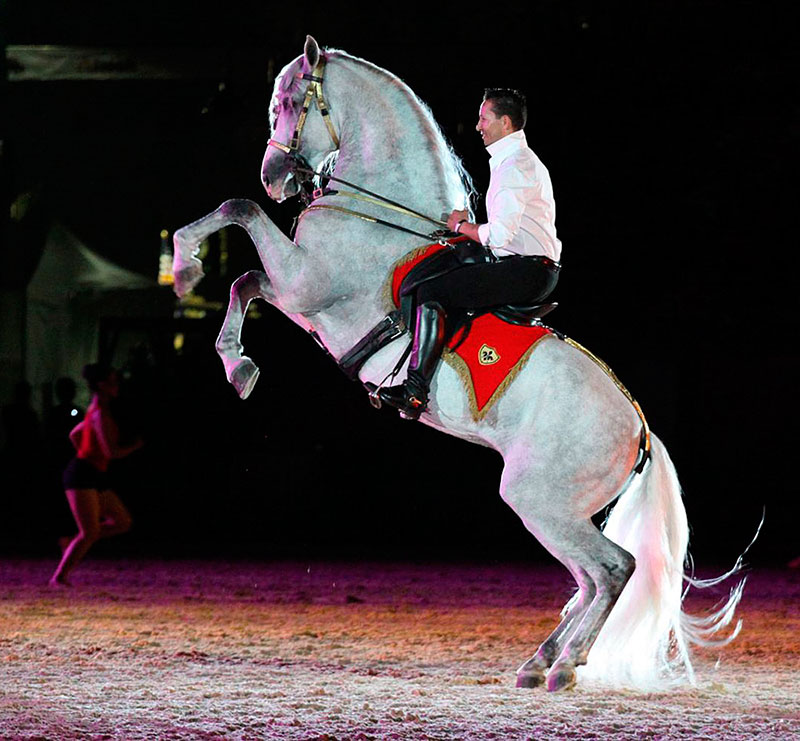Performances at the Royal Andalucian School of Equestrian Art
The Royal Andalusian School of Equestrian Art Foundation in Jerez de la Frontera is known all over the world thanks to its show entitled “How the Andalusian Horses Dance”, a unique exhibition of horsemanship which both exhibits and summarises the work which the institution has carried out since its early establishment.
The Andalusian, also known as the Pure Spanish Horse or PRE (Pura Raza Española,) is a horse breed developed in the Iberian Peninsula. Its ancestors have been present on the Iberian Peninsula for thousands of years. The Andalusian has been recognized as an individual breed since the 15th century, and its conformation has changed very little over the centuries. Throughout its history, it has been known for its prowess as a war horse, and was prized by the nobility. The breed was used as a tool of diplomacy by the Spanish government, and kings across Europe rode and owned Spanish horses.
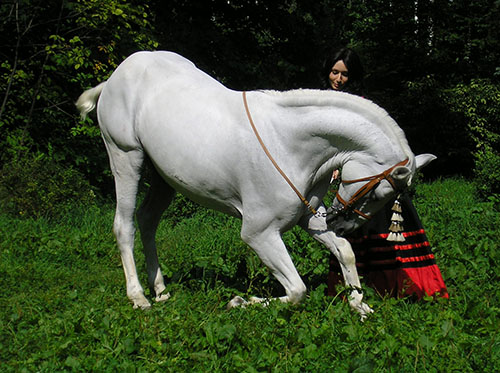
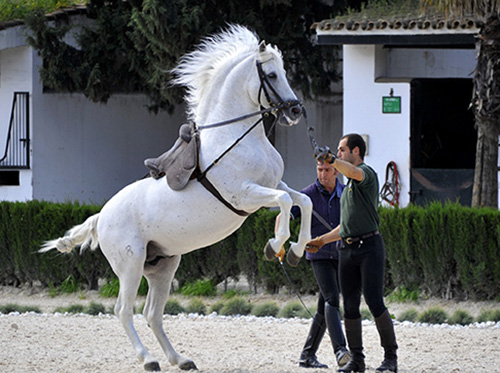
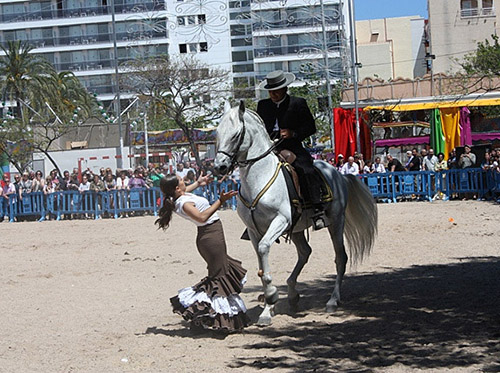
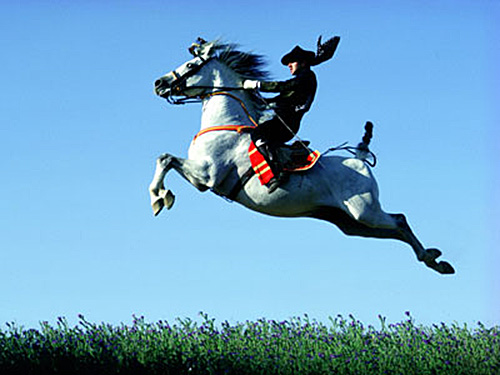
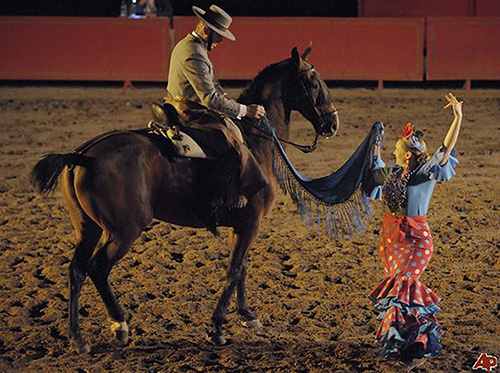
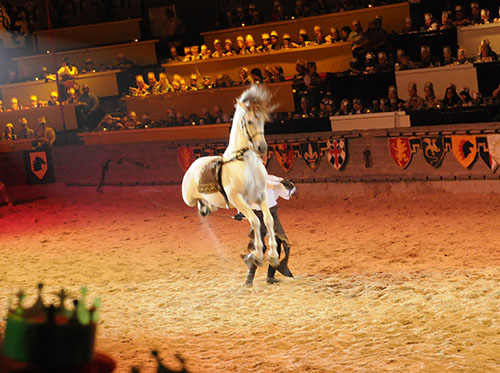
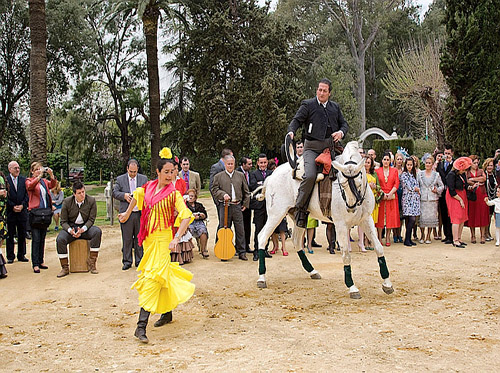
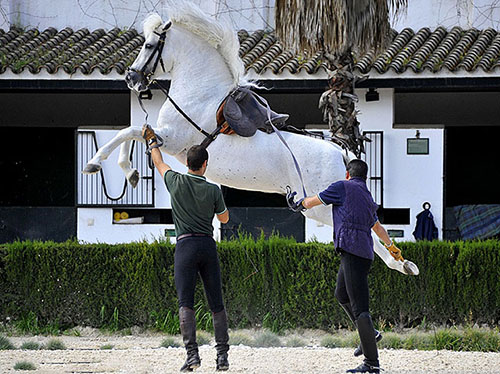
Strongly built, and compact yet elegant, Andalusians have long, thick manes and tails. Their most common coat color is gray, although they can be found in many other colors. They are known for their intelligence, sensitivity and docility. A sub-strain within the breed known as the Carthusian, is considered by breeders to be the purest strain of Andalusian, though there is no genetic evidence for this claim.
Jerez is internationally known for the magnificent dancing horses that one can see at the Royal Andalucian School of Equestrian Art. The school is an institution that is devoted to conserving the ancestral abilities of the Andalusian horse, which work to protect horse breeding and increase awareness of the culture of the horse as a part of the Andalusian identity, such as the Spanish baroque horsemanship. The institution organizes a unique show called “How the Andalucian Horses Dance”, an equestrian ballet which combines an elegant choreography with classical flamenco music. During the show the riders wear traditional costumes dating back to the 18th century. Jerez de la Frontera lies in a fertile upland region on the southern edge of the Andalusian plain, some 35km/22mi northeast of Cádiz. Important to the economy of the area is the breeding of pedigree horses, particularly the fiery Andalusian breed. Jerez is famous, too, as a center of flamenco dancing and the cante jondo. All these activities come together in two great annual festivals.
Horse of Kings-Thief of Hearts
Spanish Pure Bred
Although the breed is commonly referred to as "Andalusian", in Spain, it is usually referred to as Pura Raza Española, simply meaning "Spanish Pure Bred", and you will often see it abbreviated to P.R.E.
The origin of the Spanish horse does not have a specific date but goes back long before the birth of Christ, as suggested by vestiges in the Iberian Peninsula from the Paleolithic era. They are presented in the form of cave paintings that already show the importance of horses in prehistoric life systems.
The Spanish horse began to take shape in the hands of the Carthaginians, who incorporated Equids in large numbers in their armies for their enormous strength and power.
Later, the Romans greatly appreciated the value of the Spanish horse and enhanced its role both as a means of transport in civil life and in the frequent war conflicts, and as a sign of distinction for Kings and Emperors. They were also selected for circus games. Roman authors such as Plutarch, Pliny the Elder and Seneca spoke of the horse of Hispania as a beautiful, docile, arrogant and brave specimen, ideal for war and for the games of the circuses during that time.
These horses were the ones chosen to perform in the Newly formed “Spanish Riding School” in Vienna, the Spanish blood of its horses, giving the school its name. But there are many more horse breeds that originate from the Andalusians. Like the Friesians, the Royal Horse of Denmark, Neapolitan (when Naples was under Spanish rule from 1504 to 1713), Austrian Kladruber and some of the British breeds, notably the Cleveland Bay, Hackney, Connemara and possibly the Welsh Cob, to name a few. The Lusitano only separated as a breed from the Spanish horse in 1960, until this year, spanish breed horses born in Portugal were registered as Andalusians, from this year on, they went on to being called Lusitanos.
At present, the world population of Purebred Spanish Horses registered in the Stud Book amounts to over 185,000 specimens, in more than 50 countries.
It has been a tradition for many years in Spain for male horses to be ridden and for mares only to be used for breeding
